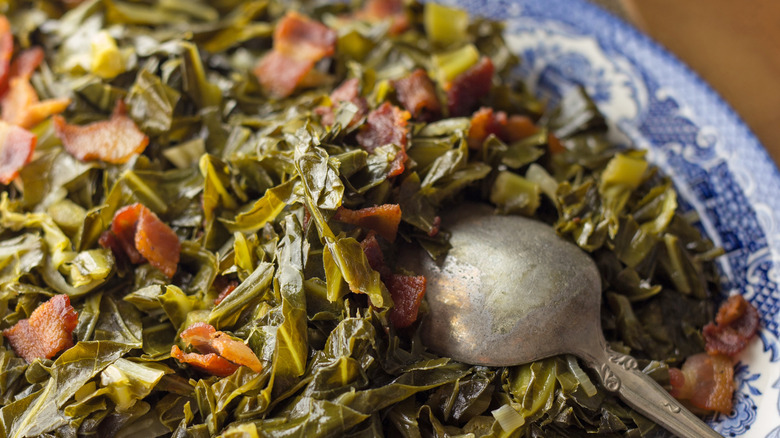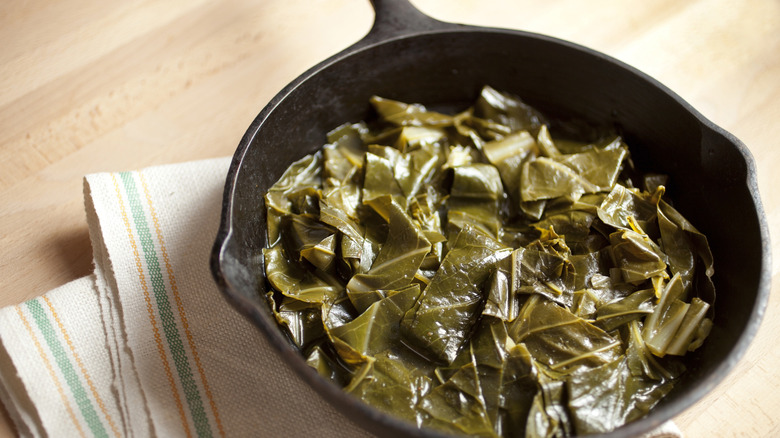A Splash Of Apple Cider Vinegar Helps Balance Salty Flavor In Collard Greens
The American South is known for its comforting cuisine. Specialties like barbecue, hushpuppies, and grits have garnered fame around the United States, but there's one dish that many outsiders just don't appreciate the same way as those with Southern roots: collard greens. The leafy greens are easy to grow, hearty, and incredibly nutritious — but, uncooked and on their own, not particularly tasty. Bringing the flavor out of a bunch of tough, bitter collard leaves takes a little work, but it's well worth it.
Collards are often cooked with ham hock or other smoked meats, chopped onions, and spices like red pepper flakes, all simmered until the leaves are wilted and the savory broth, or "pot likker," has formed. But if you're not used to making collard greens, it's easy to overlook one crucial ingredient. If you're looking to make a delectable mess of savory, Southern-style collard greens, vinegar is non-negotiable. And nothing brings the pot together like a splash of apple cider vinegar, which mellows out the salty taste of the pork, enhances the subtle flavors of the leaves, and adds a tangy bite. In recipes that call for ham hock or bacon, apple cider vinegar can help enhance the flavor of the meat. In vegetarian recipes, vinegar adds a pop of flavor to make up for the lack of seasoning from meat.
Add your cider vinegar near the end of simmering
Getting that well-balanced flavor in your collard greens with apple cider vinegar is relatively simple — you'll just need to taste-test a few times when your dish is nearly done. You'll want to add the cider vinegar right at the end, just before you plan to serve the greens — cooking the vinegar for too long will muddle the flavors and dull that bright, clean note. However, you should keep in mind that the pungent taste of vinegar can easily overwhelm other, more subtle flavors in the greens. You'll probably need less than you think: Start with just a tablespoon, taste, and then add more, tablespoon by tablespoon, if necessary. Alternatively, you can serve it on the side and let each person add as much as much as they'd like.
If you don't have apple cider vinegar on hand, you can substitute white vinegar (again, tasting with each tablespoon to account for taste). And, in a pinch, a dash of lemon juice will do the job — the acidity will similarly cut through the savory broth and bitter greens for a deliciously balanced dish.

